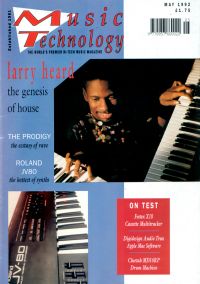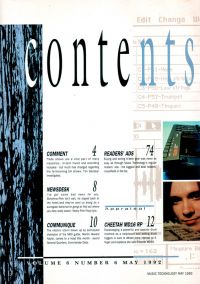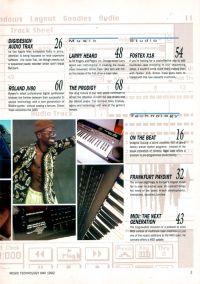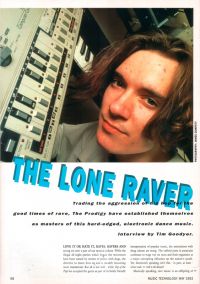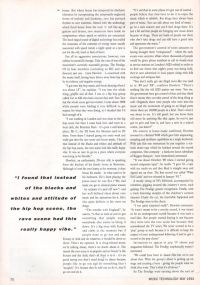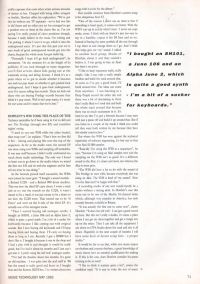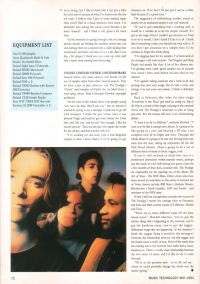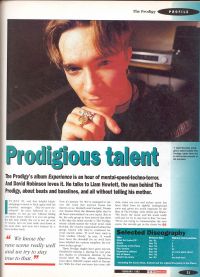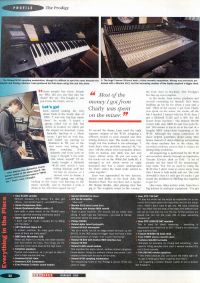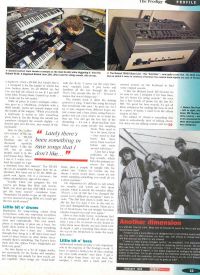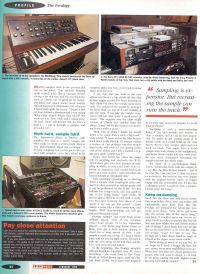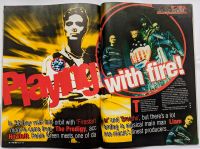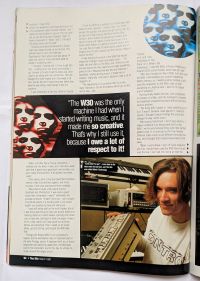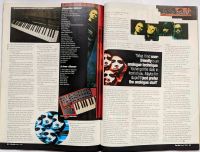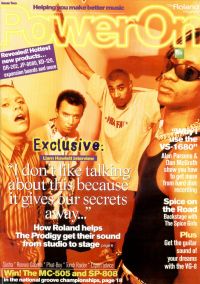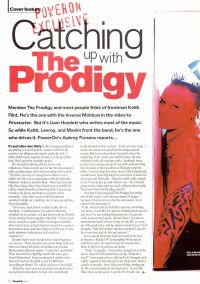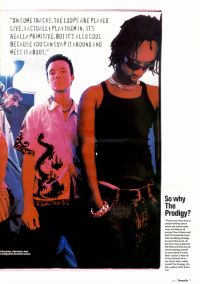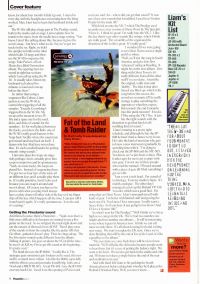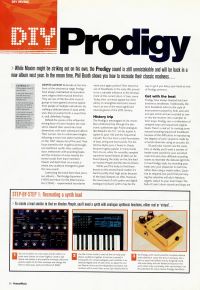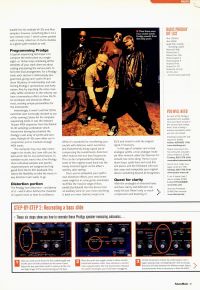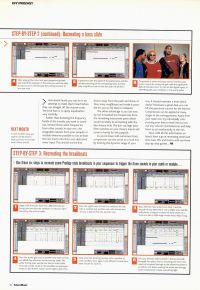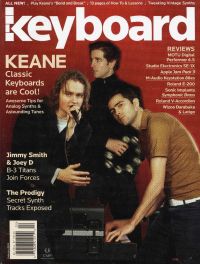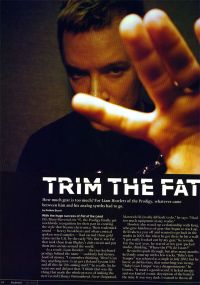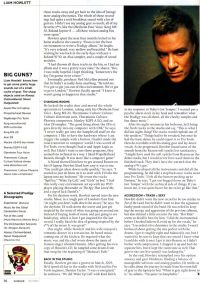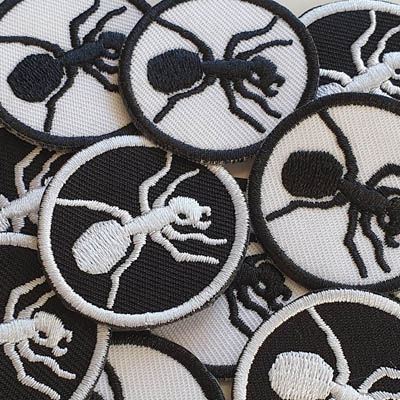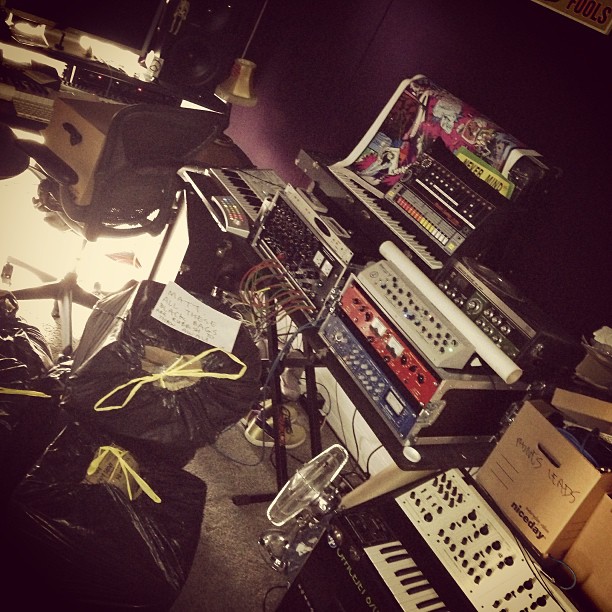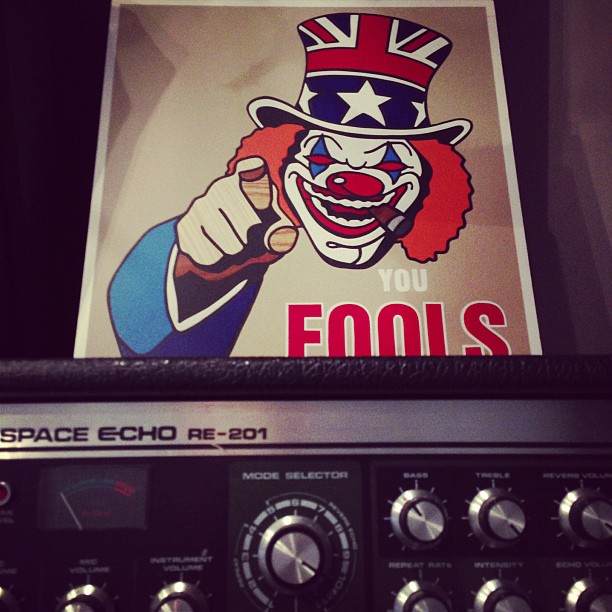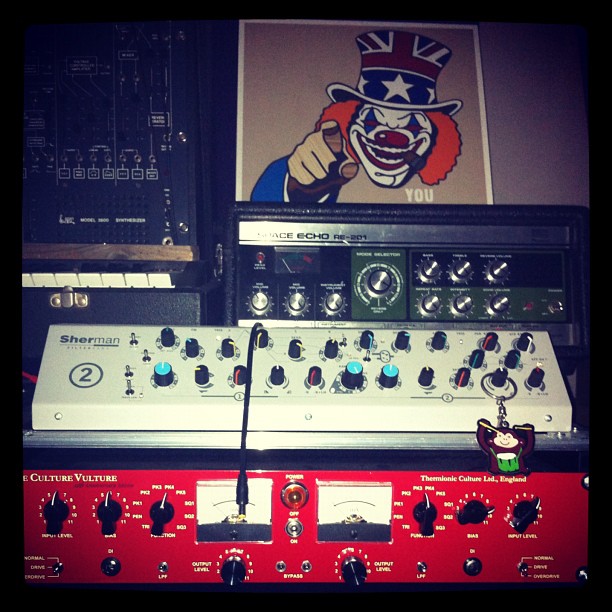Equipment
Liam Howlett’s synths and gear in studio and live.
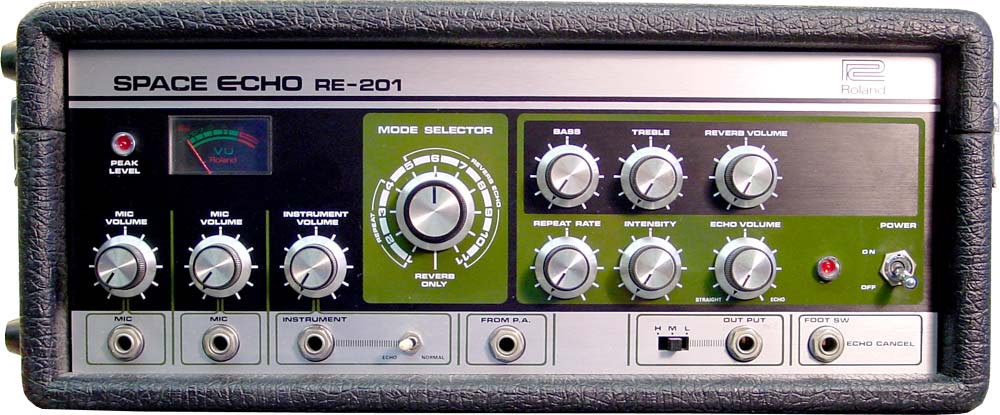
Roland Space Echo RE-201
The Roland RE-201, commonly known as the Space Echo, is an audio analog delay effects unit produced by the Roland Corporation. Produced from 1974 to 1990, the unit was widely used and continues to be preferred over digital delay units by a number of guitarists, who praise its sound and reliability.
A tape echo device records incoming audio to a loop of magnetic tape, then replays the continuous loop over the playback head before it is erased again by new incoming audio. The first commercial echo unit was the EchoSonic which had its own amplification and a delicate tape mechanism that required frequent attention. The design was further perfected in the Echoplex with adjustable echo delay. It provided a reliable and much smaller, portable package that could be used with any amplifier. In the late 1960s Ikutaro Kakehashi, later the founder of the Roland Corporation, built a tape echo using a short tape loop based on the design of the Echoplex and the EchoSonic; his Ace Tone EC-1 Echo Chamber was the first of a number of models. In 1973, then operating under the Roland brand, Kakehashi introduced the Roland Echo Chamber RE-100 and RE-200, the latter with an added spring reverb.
Kakehashi's breakthrough development came in 1974 with the RE-101 and RE-201 Space Echo units, which used the standard 1/4" tape of the open-reel variety, but made as one, continuous loop. It uses no reels of any kind; the tape is transported via a capstan drive. The tape loop is contained in a loose, constantly moving jumble in the tape chamber (also known as the tape tank) under a plastic panel which protects the tape and keeps it from getting tangled. The design resulted in lower levels of noise, wow, and flutter, and cut down on tape wear. Replacement tapes were sold as well, named RT-1L.
There are several control dials on the device that alter such aspects as tape speed, repeat pattern (an 11-position rotary switch), one instrument and two microphone inputs, a single analog backlit VU meter for all three inputs, wet/dry mix for both echo and reverb, and intensity (number of repeats, in a sense; it actually reduces how much the erase/record head erases the tape), that can be adjusted to a user's liking; and bass/treble controls to EQ the sound of the repeats (not the dry signal), as well as dry and effected "Echo" output jacks with a switch for output setting (-10, -20, -35db levels.)
Used as a delay/echo, the Roland RE-201 is said to produce a potentially unpredictable delay that is warm and gritty sounding. It is also capable of producing a large variety of its own sound effects, even without an input signal (by turning the intensity control to maximum and allowing the unit to self-regenerate, or self-oscillate, while manipulating the tape speed and other controls).
In 2010 Roland's guitar effects company, Boss Corporation, introduced a digital modeling pedal of the space echo, the RE-20.
Roland related articles
01 May 1992 The Music Technology Magazine
The Lone Raver
01 Feb 1993 Future Music
Prodigious talent
01 Oct 1996 Sound On Sound
Liam Howlett • The Prodigy & Firestarter
01 Mar 1997 The Mix
Playing with fire!
01 Jan 1999 Power On
Catching Up With The Prodigy
01 Dec 2000 Future Music
DIY Prodigy
01 Oct 2004 Sound On Sound
Liam Howlett: Recording Always Outnumbered, Never Outgunned
29 Nov 2004 Korg magazine
Never Outgunned: Liam Howlett
01 Feb 2005 Keyboard Magazine
Trim the Fat
01 Oct 2010 Sound On Sound
Jon Burton: Mixing & Recording The Prodigy Live
18 May 2015 MusicTech magazine
Landmark Productions: The Prodigy – The Fat of the Land
02 Nov 2018 The Guardian
The Prodigy: No Tourists review – music for the jaded generation
30 Jul 2019 MusicTech magazine
Prodigy engineer/co-producer Neil Mclellan remembers the Jilted Generation sessions
If you know something else about this piece of gear, please mail to me or contact me via feedback form.
